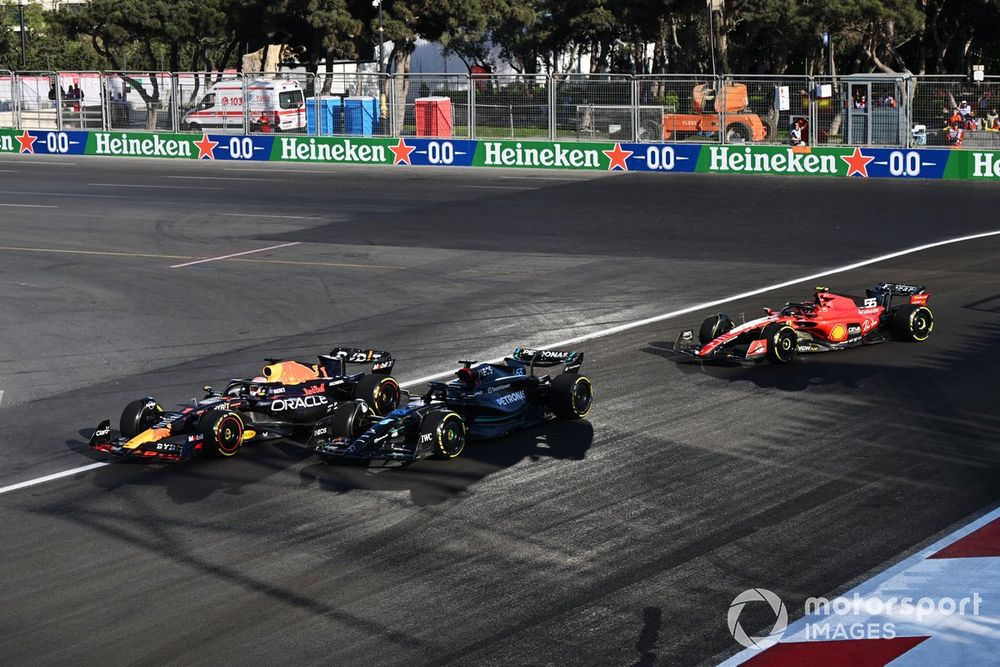Extreme tyre degradation plus Fernando Alonso’s late scraps with Carlos Sainz and Lewis Hamilton injected excitement into the Bahrain season opener. Max Verstappen recovering from 15th to second did similar for Saudi Arabia before the red flag chaos unfolded in Australia. Those events aside, the on-track action has left plenty to be desired. And when there was no such smokescreen in either the Baku sprint or full grand prix, valid allegations of them being boring affairs were rife from viewers.
The lack of drama also hasn’t been lost on the paddock. Mercedes driver George Russell reckons 2023 is already “less exciting” and singled out events in Azerbaijan for being as “dull as we all expected”. Meanwhile, Pierre Gasly reckons the criticism is a touch premature and that plenty of action might arrive imminently. He compares it to watching a movie, saying: “If you go to the cinema and after 15 minutes the movie is shit but then the last hour and a half is amazing.”
Still, though, there’s enough of a sample size after four complete rounds to argue that a reduced spectacle is not purely circumstantial. It is instead the result of a complex confluence of factors – a list led by F1 hitting its goal of resetting the rulebook to make the championship uber competitive.
The landmark shift in the technical regulation for 2022 that placed the emphasis on ground-effects was conceived to upset the established order and allow the cars to follow one another more closely without the excessive tyre-shredding and downforce-shedding dirty air. The consensus from drivers throughout last season, even if Red Bull eventually proved dominant and there were no shock winners, was that the latter had been achieved.
Max Verstappen, Red Bull Racing RB19, George Russell, Mercedes F1 W14, Carlos Sainz, Ferrari SF-23
Photo by: Simon Galloway / Motorsport Images
Twelve months on, there has been a natural convergence from teams’ technical departments around the optimum design solution and a window in which to rectify their aerodynamic wrongs. This has created a fiercely contested midfield. In Q1 in Bahrain, the top 17 cars were separated by less than 0.9 seconds. In Australia, 1.6s covered the fastest race laps set by the top 16. The downside of this tight battle between cars that enjoy varied handling characteristics is that the field is arguably too close for its own good. The drivers don’t have a sufficient delta to pass the car ahead as…
Click Here to Read the Full Original Article at Motorsport.com – Formula 1 – Stories…

